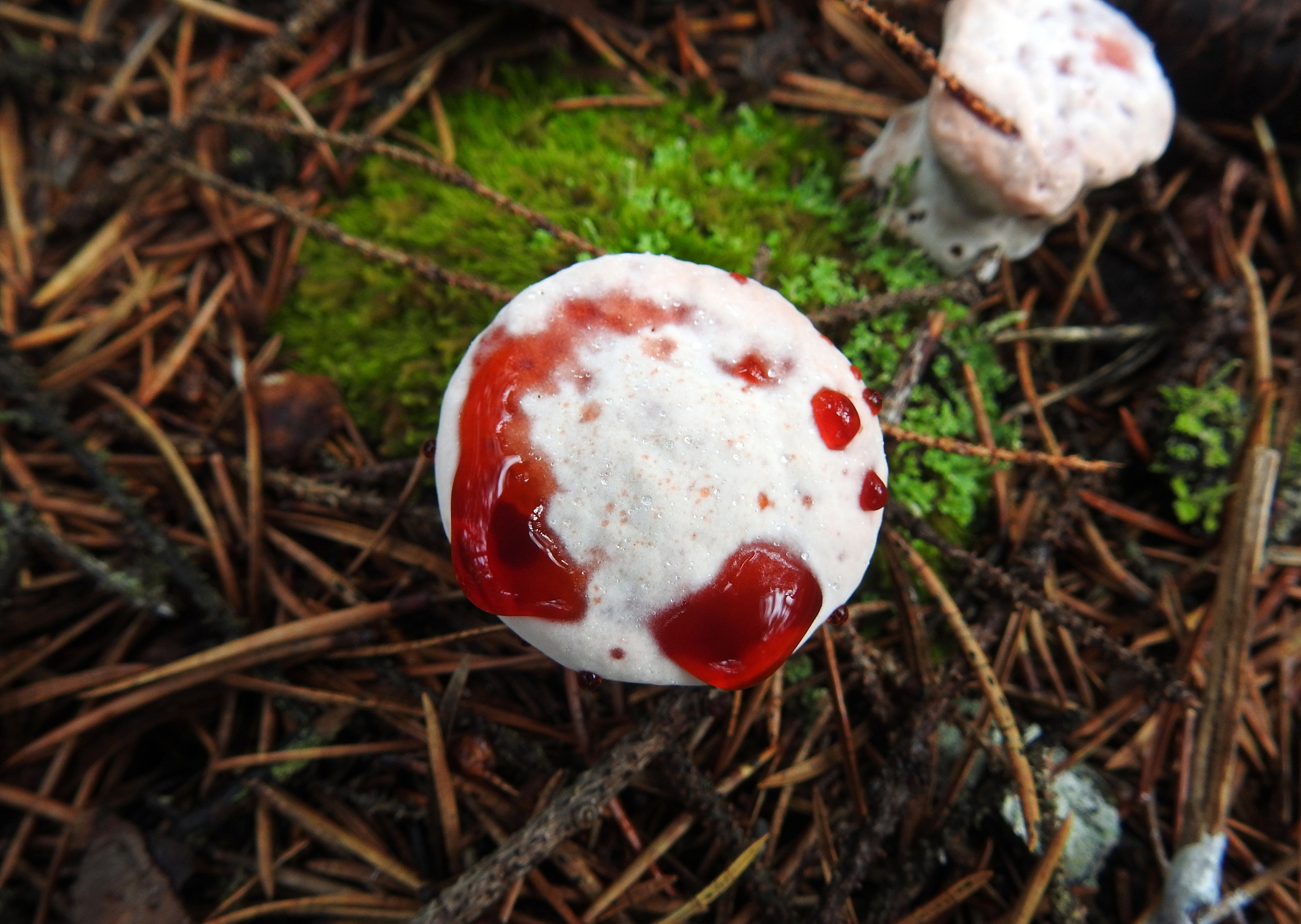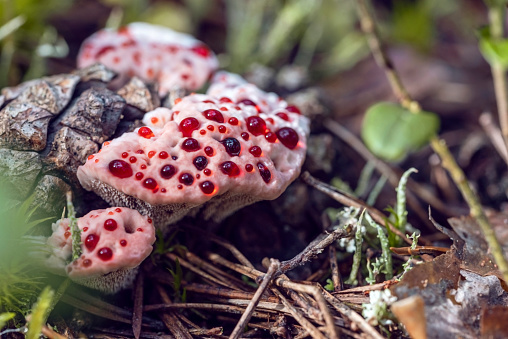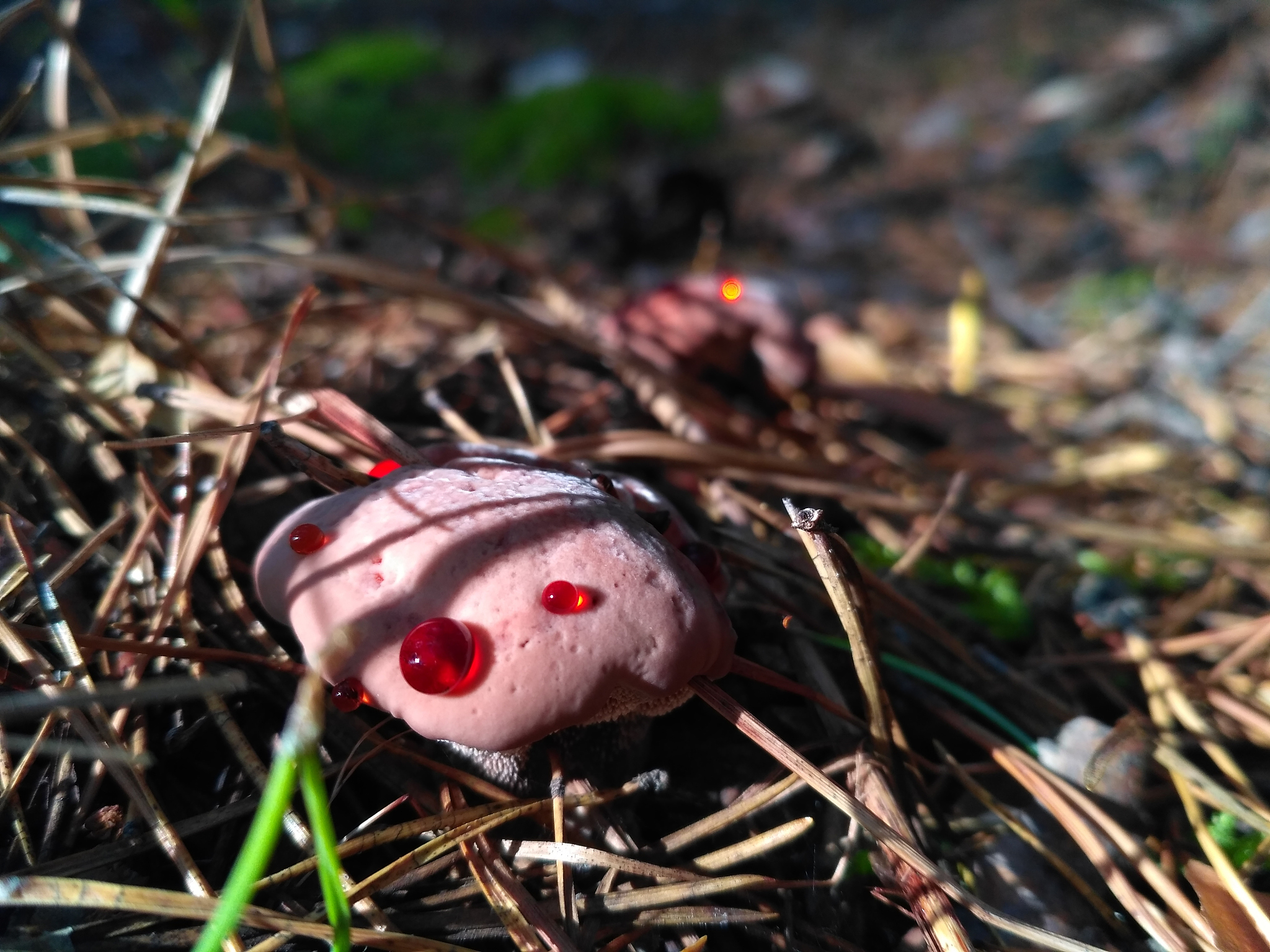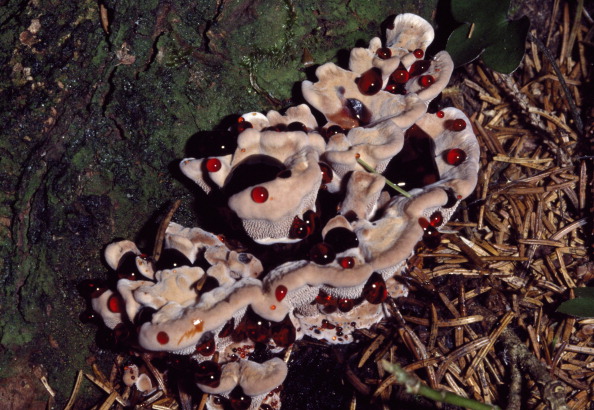Do you know that mushrooms can "bleed"? The bleeding tooth fungus (Hydnellum peckii) can amazingly ooze out red fluid as if it had been pricked with a needle, but this is actually caused by a process similar to water seeping out at the edges of a plant's leaves.
When the soil surrounding the fungus is too wet, the bleeding tooth fungus will have excess water inside, which creates pressure to force the water to "bleed out." Although scientists don't know what this gooey fluid is, they infer that its red color comes from a pigment found in the fungus.

Bleeding tooth fungi in Alaska, U.S. /Getty
Bleeding tooth fungi in Alaska, U.S. /Getty
Interestingly, this "bleeding" phenomenon only happens when the bleeding tooth fungus is still young and growing. When it matures, it loses the red sap on the top and becomes rather dull in appearance. So, every "bleeding" mushroom you find is an adolescent. People even call it "strawberries and cream," but you surely don't want to have a bowl of it. By the way, it is not toxic despite its sinister look.

Bleeding tooth fungus. /Getty
Bleeding tooth fungus. /Getty
You might wonder why it is called "tooth" fungus because it doesn't always look like a molar. Well, it gets the name for the tooth-like spines beneath the "bleeding" cap, where its spores are produced.
If you want to find the bleeding tooth fungus in the forest, you'd better look for coniferous trees first. The fungus develops a symbiotic relationship with coniferous trees. In other words, the tree provides carbon dioxide to the fungus, while the fungus helps the tree better absorb amino acids and minerals in the soil. Its presence often indicates that the forest is rich in biodiversity.

Bleeding tooth fungi. /Getty
Bleeding tooth fungi. /Getty
The bleeding tooth fungus surprisingly has many potential uses. People often dry it and make it into a beige dye. It can also create blue-green hues when combined with substances like alum or iron. Besides, scientists have discovered that the fungus contains anti-coagulant substances that can keep blood clots from forming and thelophoric acid, which may be used in the treatment of Alzheimer's disease in the future.

Bleeding tooth fungus. /Getty
Bleeding tooth fungus. /Getty

Bleeding tooth fungi. /Getty
Bleeding tooth fungi. /Getty

